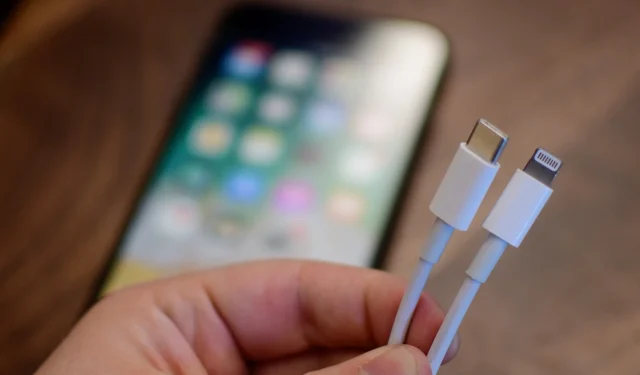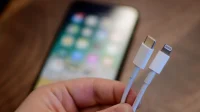Only the iPhone 15 Pro and iPhone 15 Pro Max will offer USB-C high-speed data transfer, and non-Pro models are limited to USB 2.0 speeds.
- What is happening? The next iPhone will ditch Lightning and adopt USB-C, but only the iPhone 15 Pro will support much higher transfer speeds.
- Why care? Potential non-professional iPhone buyers should be aware that they won’t experience a noticeable difference in data transfer speeds despite having a USB-C port.
- What to do? Keep following Apple rumors.
The data transfer speed of the iPhone 15 Pro using a wired connection could be greatly improved if reliable analyst Ming-Chi Kuo is right.
Kuo took to Twitter to share his latest prediction for Apple’s 2023 iPhone lineup. According to his sources in the Apple supply chain, all 2023 iPhones will ditch Lightning and move to USB-C, but only Pro-brand models will support the high data transfer speeds provided by USB-C. Read: How to Share Wi-Fi Passwords from iPhone to Android
Regular (non-professional) iPhone 15 models will be limited to USB 2.0 speeds, he said.
In other words, you’ll need to choose an iPhone 15 Pro or iPhone 15 Pro Max model to transfer files over the network much faster than you could with Lightning. We have no reason to dispute Kuo’s prediction because the tenth generation iPad is also limited by USB 2.0 data transfer rates despite using USB-C.
Transfer rate: Lightning, USB 3.2, Thunderbolt 3
“I predict the iPhone 15 Pro and iPhone 15 Pro Max will support at least USB 3.2 or Thunderbolt 3,” Kuo writes. If that’s true, expect vastly improved wired transmission and video output. “This specification update means that the user experience for wired transmission and video output will be greatly improved,” he explains.
All iPhone Lightnings are limited to USB 2.0 data transfer rates of 480 Mbps, which translates to sixty megabytes per second. You can test this by connecting your iPhone to your computer and transferring the gigabyte file to your phone over a wired connection – it will take up to twenty seconds for the transfer to complete.
By comparison, USB 3.2 has a maximum speed of 20 GB/s, or up to 2.5 gigabytes per second. The same gigabyte file will be transferred in less than a second via USB 3.2. Thunderbolt 3 doubles data transfer speeds to 40Gbps or five gigabytes per second. In other words: Thunderbolt 3 could transfer five one gigabyte files in just one second.
Gotta love how pointless the USB 3.2 prediction is compared to Thunderbolt because it covers literally all speeds above USB 2.0. pic.twitter.com/QcOgN4JGyc
— Mark (@MarcTech1996) November 17, 2022
As you can see for yourself, the move to high-speed USB 3.2, or even Thunderbolt 3, should give the iPhone 15 Pro an edge over competing devices — in the Android world, almost all devices support only USB 2.0.
Why is Apple ditching Lightning?
Apple introduced the proprietary Lightning connector over a decade ago. As part of Apple’s “Made for iOS”certification, accessory makers pay Apple to use Lightning in their products, so Lightning is profitable in that regard.
Apple is interested in keeping Lightning as long as possible, which it does. Apple would have continued to drag out USB-C for years if it weren’t for new regulations in the European Union.
Under the new regulations, consumer electronics manufacturers selling their products in Europe must adopt a common charging standard (USB-C) by the end of 2024 to make life easier for the consumer and help reduce e-waste.
Apple is unlikely to figure it out and start selling iPhones with USB-C in Europe, and Lightning in the rest of the world. Lightning has done well, but USB-C is the industry standard that makes the iPhone compatible with most chargers.


